Preferred garden bed
GroundskeeperSmalley
7 years ago
Featured Answer
Sort by:Oldest
Comments (33)
Related Discussions
Is your Garden Method Containers, Garden, Raised Bed or other?
Comments (13)I use containers because the soil I have is pretty bad, although peppers are one of the few plant types that will survive in it. I don't like to have to bend down too far, however, and so that is another reason I like containers. I use fairly large pots and sometimes keep one plant going for up to three years and get a good supply throughout January from Guajillos and jalapenos. I pretty much never move the pots because I do not have any other places to put them, and they all get southern exposure. I did replant most of my pots this year to get fresh, strong plants. I've not had any luck growing from seed so far....See MoreGarden Furniture Wood Preferences
Comments (2)John, Thanks for the feedback. That is exactly what I am curious about. Would there be a preference for ipe, or is it just to have durable good looking wood. There are other species that are quite durable and would make good garden furniture. Making furniture with ipe is an experience as you can imagine. I had doors and windows made for our house out of ipe. The woodworkers here in Brazil do not have all the equipment that they do in the States, and they suffered a bit. It took two men to lift the front door into place, and even that was a struggle. But, they look nice. Thanks, dk...See MoreCurb apeal, expanding garden bed
Comments (20)I wouldn't plant straight across that curb on only the one side. It will only accentuate the imbalance. I'd dig out a half circle around the mailbox, not going to the sidewalk, and plant something about 8-12" tall, all the same, like an ornamental grass. I'd grow a vine up the lamp post. Since the garage and driveway dominate the left side, you need something to balance out the "tall side". I'd make a larger bed around the tree, perhaps parallel to the sidewalk, and oblong/kidney shape. A mounded bed would have been really nice to give some relief to the flat lawn. Google mounded bed gardening. If you like this idea, you might consider doing this in the fall so you can replant the tree and shrubs. It's best to do this before the tree gets any bigger and the plants have to compete with its roots to get established. Center the tree as the focal point or move it to the back of the bed, closer to the house. I think the advantage to this plan is it concentrates your planting to just one bed as it sounds like you really don't want to maintain a lot of garden by planting both sides. It just switches the focus from the left side to the right, where the expanse of lawn needs to be broken up. Add a few small evergreen shrubs and color for spring, summer, and fall. You might take some of the shrubs from your foundation and use them in that bed. I'd definitely move the gold shrub--it isn't a good color with the dark gray house. I think you need larger and fewer shrubs along the foundation as it looks a bit busy and not cohesive. I'd remove the dwarf conifer near the garage and the one on the corner of the house. You need something large and with a less clipped structure to anchor that corner. Fertilize your lawn and done!...See MorePreferred method to meet with other gardeners, without joining clubs?
Comments (6)The benefits of joining a local garden club are numerous, especially because you can exchange ideas (and plants, seeds, etc.) with other gardeners living in your own area. They know best which plants are ideal for adding to your garden, based on their experiences gardening in the local environment. The more members the club has, the more useful it is for everyone. Over 1,300 gardening families around Naples and Fort Myers have already become members of our own group, called Gardeners of Southwest Florida.Everything in our club is free: instant membership, gardening classes, light foods, soft drinks, etc. As the group's leaders, my wife Suzanne and I pay all the expenses, to encourage Floridians to become better gardeners. Two-hour classes are held in the gardens of different group members each time, usually on weekends, two or three times a month. The class hosts show how they care for their favorite plants, and demonstrate their gardening techniques.Over shared snacks and drinks, from 10 to 83 members and guests have attended the 123 past gardening classes so far. Everyone is taught, often by horticultural experts, about the best plants to grow in this semi-tropical environment. Topics include raising flowers, vegetables, fruits, cactus, succulents, bromeliads, orchids, bonsai, native plants, tropical plants, flowering shrubs and trees. Other classes teach subjects like organic gardening, water gardening, vertical gardening, butterfly gardening, wildlife gardening, landscaping, composting, fertilizing, pruning, indoor plants, invasive plants, pest management, and permaculture.As shown in these photographs, occasionally classes take place in our own garden in Naples (Zone 10b). It includes a wide range of bromeliads, flowering shrubs, productive fruit trees, a small pineapple plantation, a raised desert garden, and large fish ponds with water lilies, papyrus and other aquatic plants, plus hundreds of goldfish and other species. Everyone is welcome to join the group for free, and to attend the classes to meet other local gardeners. A few attended a recent class in the screened enclosure of our own garden are shown below. Hundreds of photos and full details of past and upcoming classes are on the group’s extensive and informative website at www.meetup.com/FloridaGardeners.At right: Peter Kacalanos and Suzanne Cherney, group leaders, Gardeners of Southwest Florida...See Morewayne_5 zone 6a Central Indiana
7 years agoGroundskeeperSmalley thanked wayne_5 zone 6a Central IndianaGroundskeeperSmalley
7 years agoGroundskeeperSmalley
7 years agoGroundskeeperSmalley
7 years agodefrost49
7 years agoGroundskeeperSmalley
7 years agodefrost49
7 years agotbenjr
7 years agotete_a_tete
7 years agotete_a_tete
7 years agonancyjane_gardener
7 years agotete_a_tete
7 years agoGroundskeeperSmalley
7 years agopurslanegarden
7 years agoGroundskeeperSmalley
7 years agodefrost49
7 years agotete_a_tete
7 years agolast modified: 7 years agowayne_5 zone 6a Central Indiana
7 years agoGroundskeeperSmalley
7 years agoGroundskeeperSmalley
7 years ago
Related Stories

GARDENING GUIDESGreat Design Plant: Lobelia Siphilitica Keeps Its Cool
Great blue lobelia, a flowering native that prefers moist soil, adds a calming blue hue to the late-summer garden
Full Story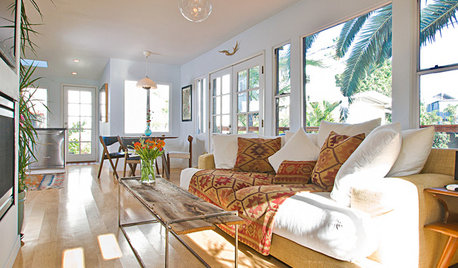
LIFEYou Said It: ‘I Actually Prefer Small Houses’ and Other Quotables
Design advice, inspiration and observations that struck a chord this week
Full Story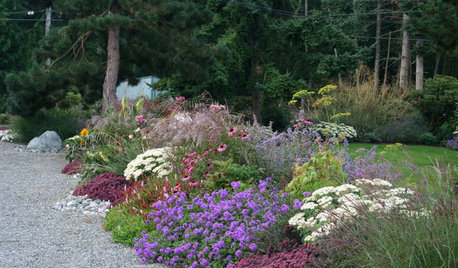
MOST POPULARHow to Design a Colorful Flower Bed
Fall planting: Delight the eye through 3 seasons with bright flowers placed just right. Late summer is the time to plan
Full Story
GARDENING GUIDESGreat Design Plant: Knock Out Roses
As glorious as their high-maintenance kin for a fraction of the work, Knock Out roses make even beginners look like garden stars
Full Story
NATIVE PLANTSPlant These Fall-Flowering Natives in Early Summer for Pollinator Love
These 3 groups of plants will support masses of beneficial insects come autumn
Full Story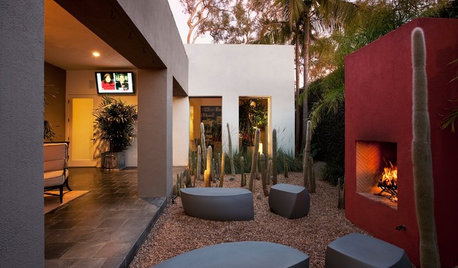
GARDENING GUIDES10 Creative Ideas for Cactus and Succulent Gardens
Arrange cactuses and succulents amid salvaged treasures, against a vibrant painted wall or in terraced beds
Full Story
GARDENING GUIDESGreat Design Plant: Milkweed
Quit cringing. This not-weed plant is a sight to behold in the garden, has a delicious vanilla scent and is a magnet for butterflies
Full Story
GARDENING FOR BUTTERFLIESGreat Design Plant: Scotch Heather
The moors aren't all moody, as this prettily colored evergreen shrub proves. Plant it en masse for an epic romance in your own garden
Full Story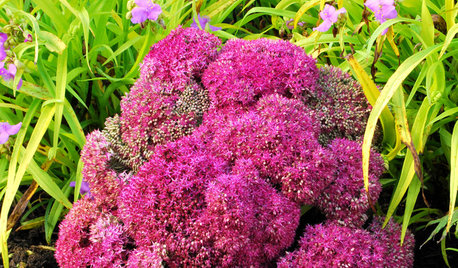
GARDENING GUIDESGreat Design Plant: Sedum (Stonecrop)
Terrific at filling gaps and in a wide range of colors and shapes, sedum is a problem solver in the garden
Full Story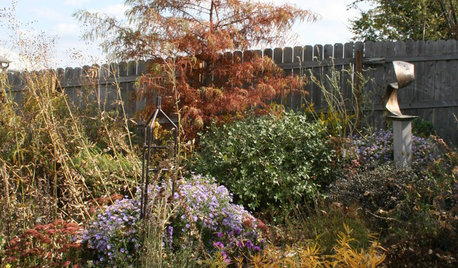
REGIONAL GARDEN GUIDESCentral Plains Gardener's October Checklist
Fall foliage color and crisp mornings, plus mulching beds and planting spring bulbs, make October a gardener's heaven
Full Story


LoneJack Zn 6a, KC